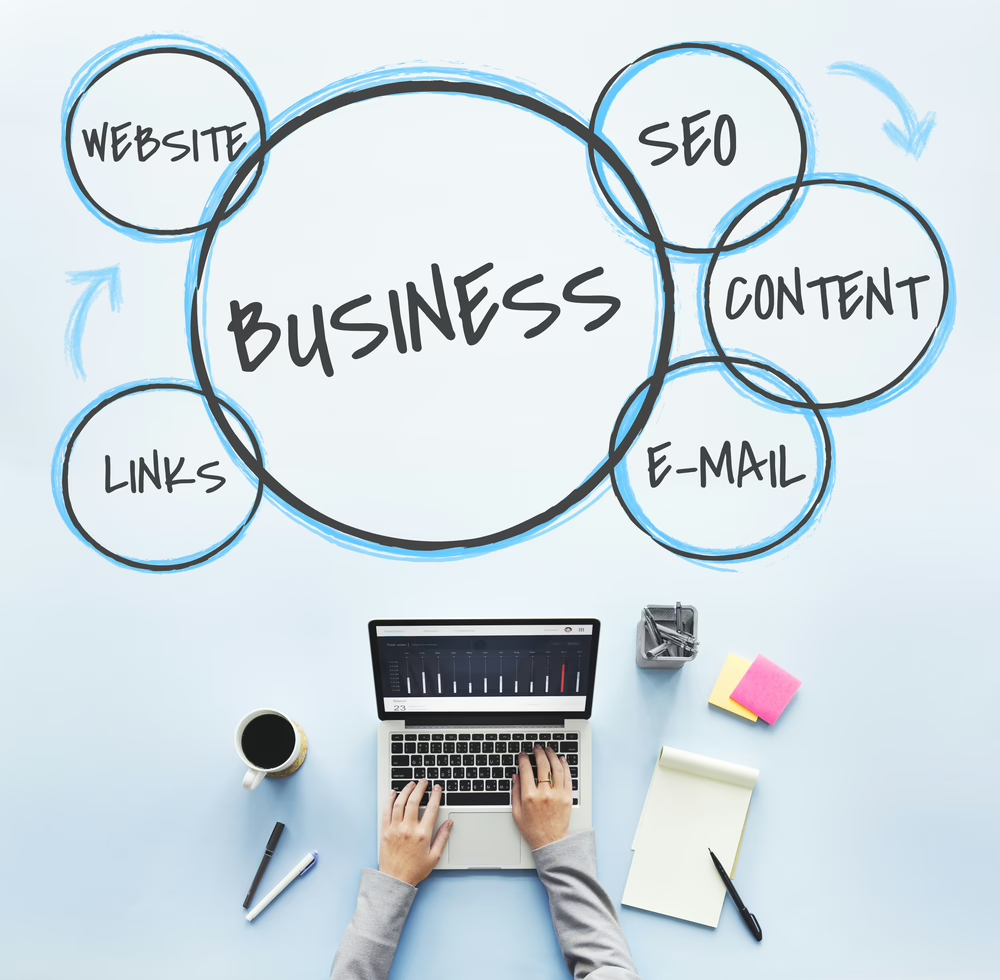
5 Smart Uses for Social Proof in Great B2B Email Marketing
In a digital age, it can be easy to forget that humans are a social species. In ancient times, our ancestors depended on the opinions and knowledge of their clans, tribes, and kin for survival. Today, we still have an instinct to believe the words of trusted others.
Social pressure is the most powerful force in humanity, which is why social proof is one of the most powerful drivers of brand trust and buyer intent. You are probably already using social proof on your websites and landing pages. If you have not yet incorporated social proof into your B2B email marketing, it is time to start.
In this article, we discuss the following smart uses for social proof in B2B email marketing:
 No copywriting critical turn of phrase can quite compare to a happy customer. If you have satisfied customers who have publicly attested to — or are willing to attest to — the quality of your product, service, or offer, why not put it in an email? You could incorporate a customer testimonial (or different testimonials) into the header of the email, or the signature section, so that a glowing testimonial is always close at hand. You could even turn your customer success stories into the entire content of an email, or a series of emails, each highlighting one customer success story.
No copywriting critical turn of phrase can quite compare to a happy customer. If you have satisfied customers who have publicly attested to — or are willing to attest to — the quality of your product, service, or offer, why not put it in an email? You could incorporate a customer testimonial (or different testimonials) into the header of the email, or the signature section, so that a glowing testimonial is always close at hand. You could even turn your customer success stories into the entire content of an email, or a series of emails, each highlighting one customer success story.  A fantastic and easy source of social proof are the reviews and ratings left for your company on user-generated content management platforms like Google reviews, Facebook reviews, TrustPilot, Yelp, the Better Business Bureau, and any other trusted source where users can use reviews. Studies have repeatedly shown that users weigh online reviews almost as heavily as a referral from a trusted friend or family, so the power of online reviews cannot be ignored. If you happen to have a very high star rating on various platforms — 5 out of 5, 4.9 out of five, or close to it — you can and should mention that aggregated rating (“5 Stars on Google!” and so on). If your aggregated reviews are not high enough to impress anyone (basically anything below 4.8), look for different sources of social proof. When it comes to ratings, only “perfect” is good.
A fantastic and easy source of social proof are the reviews and ratings left for your company on user-generated content management platforms like Google reviews, Facebook reviews, TrustPilot, Yelp, the Better Business Bureau, and any other trusted source where users can use reviews. Studies have repeatedly shown that users weigh online reviews almost as heavily as a referral from a trusted friend or family, so the power of online reviews cannot be ignored. If you happen to have a very high star rating on various platforms — 5 out of 5, 4.9 out of five, or close to it — you can and should mention that aggregated rating (“5 Stars on Google!” and so on). If your aggregated reviews are not high enough to impress anyone (basically anything below 4.8), look for different sources of social proof. When it comes to ratings, only “perfect” is good. Since its inception, social media has been a boon to businesses for its propensity to create user-generated content. When users generate content about your brand, that is content that you do not have to strategize (or pay) to create yourself. If you are looking for social proof to include in your B2B email marketing campaigns, start with your social media. The conversation of your followers can be excellent sources of testimonials, recommendations, and other forms of social proof.
Since its inception, social media has been a boon to businesses for its propensity to create user-generated content. When users generate content about your brand, that is content that you do not have to strategize (or pay) to create yourself. If you are looking for social proof to include in your B2B email marketing campaigns, start with your social media. The conversation of your followers can be excellent sources of testimonials, recommendations, and other forms of social proof.
- Featuring testimonials and customer success stories.
- Showcasing industry awards and accolades.
- Utilizing case studies and data-driven results.
- Leveraging user reviews and ratings.
- Incorporating client logos and partnerships.
- Sharing media mentions and press features.
- Creating a community voice through social media highlights.
Tired of investing in Search Engine Optimization without getting any results? See how Digital Authority Partners turns that around!
Understanding Social Proof in the B2B Context
Social proof is the testimonial of other people to the quality of your company. Think of it this way. You can shout until you are blue in the face about how you are the best, but no one will necessarily believe you. When someone else claims that you are the best, that carries a lot more weight. Especially if the claim comes from a trusted source, like a family friend or a well-known brand. For B2B organizations, social proof often comes in the form of testimonials, industry awards, reviews, ratings, press and media notice, A-list clients or endorsements, and social followings. It can also include data-driven client case studies, where you show the quantifiable results that you helped clients achieve. Email marketing is one of the highest-ROI channels for B2B marketing. While important and great for lead-generation and message testing, social media and search engine ads are expensive. SEO and content marketing can be expensive and time-consuming. Sending emails to a list is extremely inexpensive. If you can use social proof to boost the performance of your B2B email marketing campaigns, the ROI stands to dwarf the ROI of other marketing channels. Here are some different ways that you can include social proof in your B2B marketing emails:1. Featuring Customer Testimonials and Success Stories
 No copywriting critical turn of phrase can quite compare to a happy customer. If you have satisfied customers who have publicly attested to — or are willing to attest to — the quality of your product, service, or offer, why not put it in an email? You could incorporate a customer testimonial (or different testimonials) into the header of the email, or the signature section, so that a glowing testimonial is always close at hand. You could even turn your customer success stories into the entire content of an email, or a series of emails, each highlighting one customer success story.
No copywriting critical turn of phrase can quite compare to a happy customer. If you have satisfied customers who have publicly attested to — or are willing to attest to — the quality of your product, service, or offer, why not put it in an email? You could incorporate a customer testimonial (or different testimonials) into the header of the email, or the signature section, so that a glowing testimonial is always close at hand. You could even turn your customer success stories into the entire content of an email, or a series of emails, each highlighting one customer success story. 2. Showcasing Industry Awards and Accolades
If your company has won any industry awards, make sure to highlight them. You can easily include the awards in the signature section. Consider including logos and branding for the awards if they are recognizable. You may also mention your awards in portions of the email meant to build credibility. But why stop there? The stories behind the awards can make good content. Why not craft an email or series of emails around the stories of the awards? Granted, you are talking about yourself when you tell those stories and not about the customer, so the relevance might be hit-or-miss. But if it is an engaging story, it just might connect, especially since it is a story of how good your business is at its job.3. Utilizing Case Studies and Data-Driven Results
Quantifiable results that you have produced for your clients may not seem like social proof. After all, graphs and data charts are not people. But it is still a testament to your effectiveness as a business that exists outside of you, so it actually is a form of social proof. Even if the client is not willing to commit to a public testimonial, you can use the data from the case study as external proof and verification of the quality of your offer. You can include brief mentions of top-line results such as revenue increases, cost savings, and leads generated, or you can expand each case study into an email in its own right. Case studies are stories, and stories hook readers when well-told, especially if the reader can see themselves in the story characters.4. Leveraging User Reviews and Ratings
 A fantastic and easy source of social proof are the reviews and ratings left for your company on user-generated content management platforms like Google reviews, Facebook reviews, TrustPilot, Yelp, the Better Business Bureau, and any other trusted source where users can use reviews. Studies have repeatedly shown that users weigh online reviews almost as heavily as a referral from a trusted friend or family, so the power of online reviews cannot be ignored. If you happen to have a very high star rating on various platforms — 5 out of 5, 4.9 out of five, or close to it — you can and should mention that aggregated rating (“5 Stars on Google!” and so on). If your aggregated reviews are not high enough to impress anyone (basically anything below 4.8), look for different sources of social proof. When it comes to ratings, only “perfect” is good.
A fantastic and easy source of social proof are the reviews and ratings left for your company on user-generated content management platforms like Google reviews, Facebook reviews, TrustPilot, Yelp, the Better Business Bureau, and any other trusted source where users can use reviews. Studies have repeatedly shown that users weigh online reviews almost as heavily as a referral from a trusted friend or family, so the power of online reviews cannot be ignored. If you happen to have a very high star rating on various platforms — 5 out of 5, 4.9 out of five, or close to it — you can and should mention that aggregated rating (“5 Stars on Google!” and so on). If your aggregated reviews are not high enough to impress anyone (basically anything below 4.8), look for different sources of social proof. When it comes to ratings, only “perfect” is good.5. Incorporating Client Logos and Partnerships
Working with marquee clients is huge. If a big brand name has trusted you with their business, other businesses are likely to trust you more. Of course, you need to get the client’s permission to use their name as social proof. If you can get it, work the relationship into your marketing emails. The story of the partnership might be too revealing. The company’s official logo is often more effective under these circumstances, especially if it is instantly recognizable. People associate the official logo with the official seal of approval of the brand.6. Sharing Media Mentions and Press Features
If you have been written up in the news, special interest, trade, or other publications, find ways to mention that in the emails. Include the logos of the publication, or include text that says, “As featured in ABC Publication” or “As seen in XYZ Magazine.” You can also use the story of getting featured in the publication as content if the story is interesting. If the publisher consents, and with proper attribution, you can even repurpose the press copy as email content. Get as much use out of your existing content assets as you can.7. Creating a Community Voice through Social Media Highlights
 Since its inception, social media has been a boon to businesses for its propensity to create user-generated content. When users generate content about your brand, that is content that you do not have to strategize (or pay) to create yourself. If you are looking for social proof to include in your B2B email marketing campaigns, start with your social media. The conversation of your followers can be excellent sources of testimonials, recommendations, and other forms of social proof.
Since its inception, social media has been a boon to businesses for its propensity to create user-generated content. When users generate content about your brand, that is content that you do not have to strategize (or pay) to create yourself. If you are looking for social proof to include in your B2B email marketing campaigns, start with your social media. The conversation of your followers can be excellent sources of testimonials, recommendations, and other forms of social proof. Summing Up
Social proof is a major boon to any B2B organization. If you are fortunate enough to have robust social proof of the quality of your business, do not limit it to your landing and social pages, get the word out to your email list. With creative email and content design, you can include testimonials, awards, case studies, reviews media and social media mentions in your emails: Not sure how to include social proof in your B2B email marketing? Contact Digital Authority Partners (DAP today. We can help you zero in on the perfect way to highlight your social proof in every message that you send.Want To Meet Our Expert Team?
Book a meeting directly here



